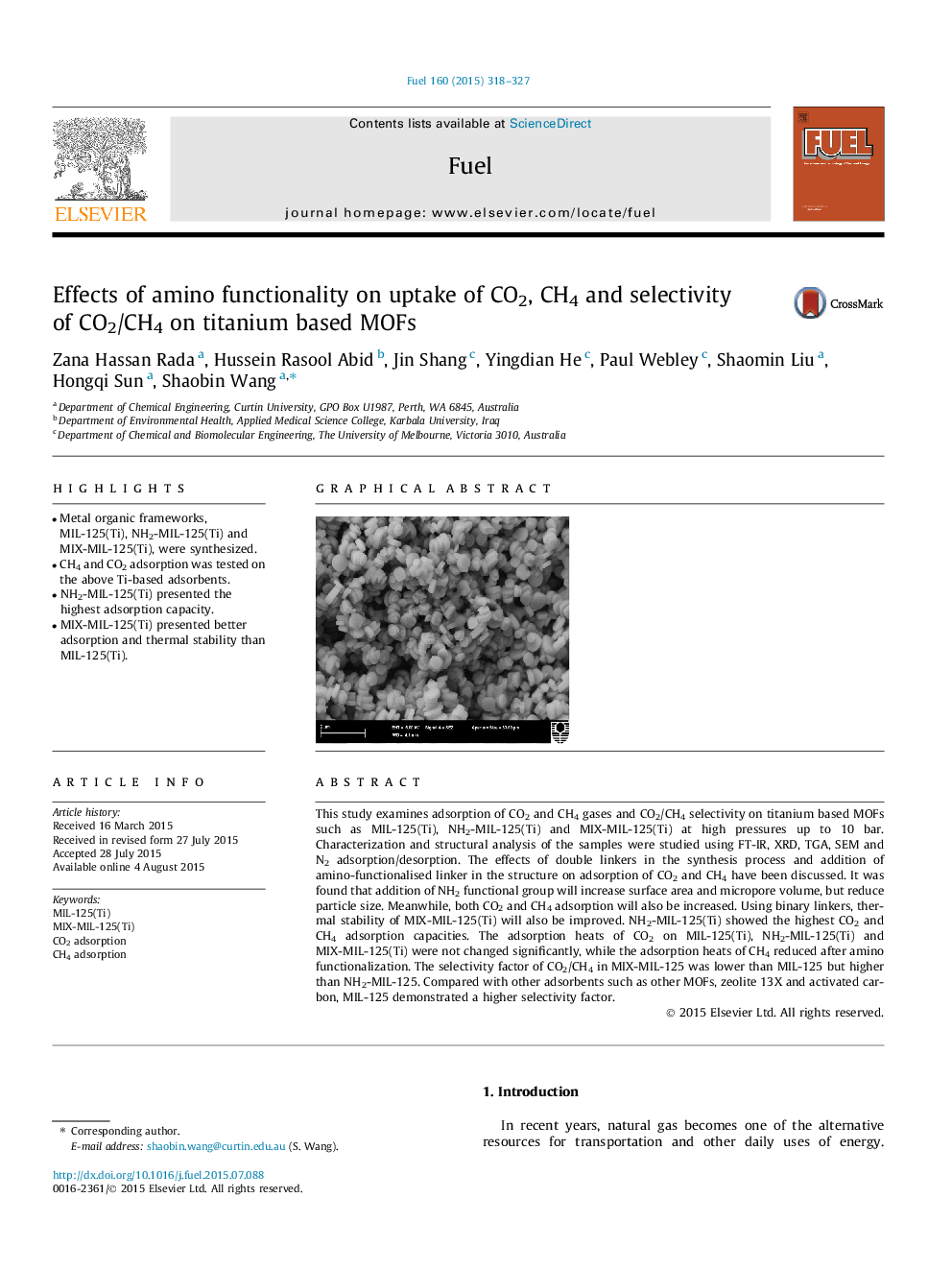| Article ID | Journal | Published Year | Pages | File Type |
|---|---|---|---|---|
| 205553 | Fuel | 2015 | 10 Pages |
•Metal organic frameworks, MIL-125(Ti), NH2-MIL-125(Ti) and MIX-MIL-125(Ti), were synthesized.•CH4 and CO2 adsorption was tested on the above Ti-based adsorbents.•NH2-MIL-125(Ti) presented the highest adsorption capacity.•MIX-MIL-125(Ti) presented better adsorption and thermal stability than MIL-125(Ti).
This study examines adsorption of CO2 and CH4 gases and CO2/CH4 selectivity on titanium based MOFs such as MIL-125(Ti), NH2-MIL-125(Ti) and MIX-MIL-125(Ti) at high pressures up to 10 bar. Characterization and structural analysis of the samples were studied using FT-IR, XRD, TGA, SEM and N2 adsorption/desorption. The effects of double linkers in the synthesis process and addition of amino-functionalised linker in the structure on adsorption of CO2 and CH4 have been discussed. It was found that addition of NH2 functional group will increase surface area and micropore volume, but reduce particle size. Meanwhile, both CO2 and CH4 adsorption will also be increased. Using binary linkers, thermal stability of MIX-MIL-125(Ti) will also be improved. NH2-MIL-125(Ti) showed the highest CO2 and CH4 adsorption capacities. The adsorption heats of CO2 on MIL-125(Ti), NH2-MIL-125(Ti) and MIX-MIL-125(Ti) were not changed significantly, while the adsorption heats of CH4 reduced after amino functionalization. The selectivity factor of CO2/CH4 in MIX-MIL-125 was lower than MIL-125 but higher than NH2-MIL-125. Compared with other adsorbents such as other MOFs, zeolite 13X and activated carbon, MIL-125 demonstrated a higher selectivity factor.
Graphical abstractFigure optionsDownload full-size imageDownload as PowerPoint slide
